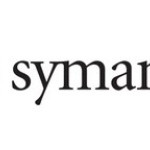- Industry: Computer
- Number of terms: 2033
- Number of blossaries: 0
- Company Profile:
Symantec Corporation is an computer security software corporation headquartered in Mountain View, California, United States. It is a Fortune 500 company and a member of the S&P 500 stock market index.
Cet acronyme signifie Network News Transport Protocol et est également connu sous le nom de Usenet ou tout simplement comme nouvelles. Nouvelle, c'est un protocole d'application de liste de discussion qui utilise le port 119/TCP.
Industry:Network hardware
This acronym means "Classless Inter-Domain Routing", which is documented in RFCs 1517-1520.
Industry:Network hardware
Un nombre décimal qui identifie de manière unique une porte d'entrée de nom d'utilisateur sur le pare-feu. En substance, l'UID devienne, pour le logiciel de pare-feu, synonyme avec le nom d'utilisateur. Uid est entrés dans le cadre du processus de création d'un nom d'utilisateur de la passerelle sur le pare-feu.
Industry:Network hardware
Cet acronyme signifie Simple Mail Transport Protocol et désigne la principale méthode de déplacement courriel sur Internet. SMTP utilise le port 25/TCP.
Industry:Network hardware
This acronym means "Hyper-Text Transfer Protocol" and refers the application-level protocol used to browse the World Wide Web. HTTP typically uses port 80/TCP.
Industry:Network hardware
This acronym means "File transfer protocol". The standard ports for FTP are 21/TCP (control) and 20/TCP (data). The firewall can pass FTP through its standard proxy, as well as browser FTP proxied through an HTTP connection on 80/TCP.
Industry:Network hardware
This acronym means "Authentication Header", and refers to a protocol, within the IPSEC suite of protocols, for the authentication of IP data. The AH protocol is described in RFC 1826.
Industry:Network hardware
This acronym means "Encapsulating Security Payload", and refers to a protocol, within the IPSEC suite of protocols, for the privacy protection of IP data. The ESP protocol is described in RFC 1827.
Industry:Network hardware
This acronym means "Generic Service Passer". See also Special Service. GSPs are used to provide application-level proxy for protocols not handled by the standard proxies. A single GSP can be used to manage a single TCP or UDP port for either transparent or non-transparent, inbound or outbound access. Examples of protocols that should be managed using a GSP include POP-3, Notes, and IRC. Like the standard proxies on the firewall, GSPs are controlled using authorization rules. They also perform address hiding and traffic logging. The major difference between the standard proxies and the GSP is that the GSP has no knowledge of the underlying application level protocol, and hence, cannot perform any protocol-specific security monitoring. Another related limitation is that authentication cannot be applied to any rule that governs a GSP, as there is no means to guarantee that the application can respond. Hence, applying a rule to a GSP will cause it to fail.
Industry:Network hardware
